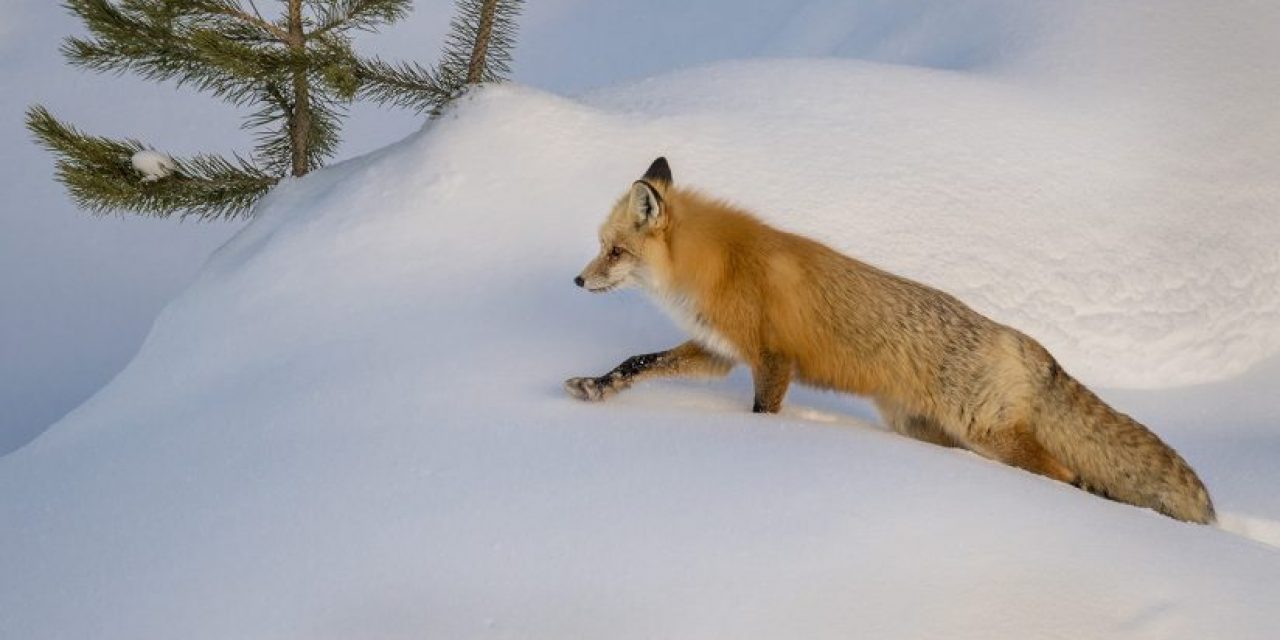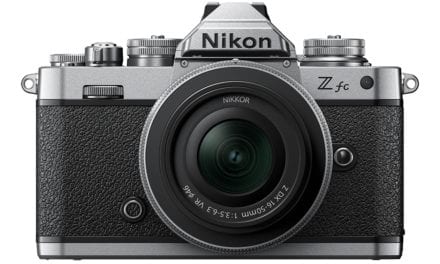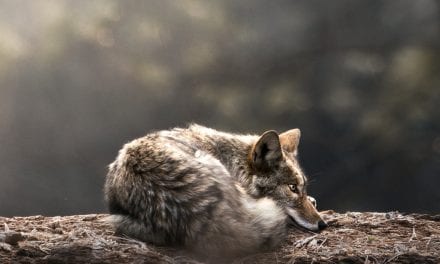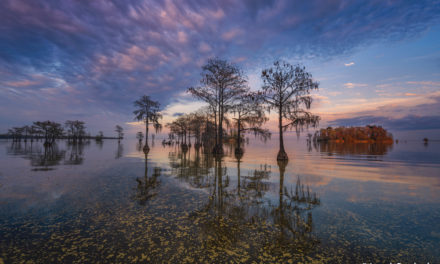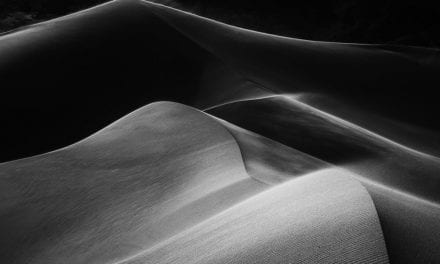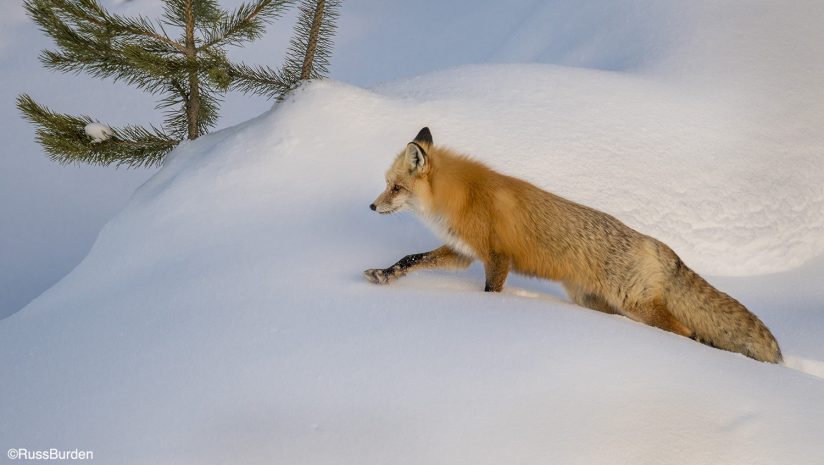
Last week, in part 1, I discussed keeping yourself and your gear dry during fog and rain, and offered tips for successfully shooting in these conditions. In the final part of this two-part series, we’ll take on snow, cold weather and clearing/impending storms.
Snow
I remember when I was a kid experiencing blizzards. I’d rush outside with my sled and within an hour, I’d be saying, “It’s too cold, I’m too wet, my feet and fingers hurt, my toes are numb and my nose won’t stop running.” Now my response is, “Cool.” I grab my camera, dress appropriately and off I go.
Snow photography can be dealt with in two ways. The first is to make images while it’s gray and overcast, and snow is falling and enveloping the landscape. The second deals with crisp, clean sunlight reflecting off its surface. The light is intense, bright and wreaks havoc on a camera’s metering system.
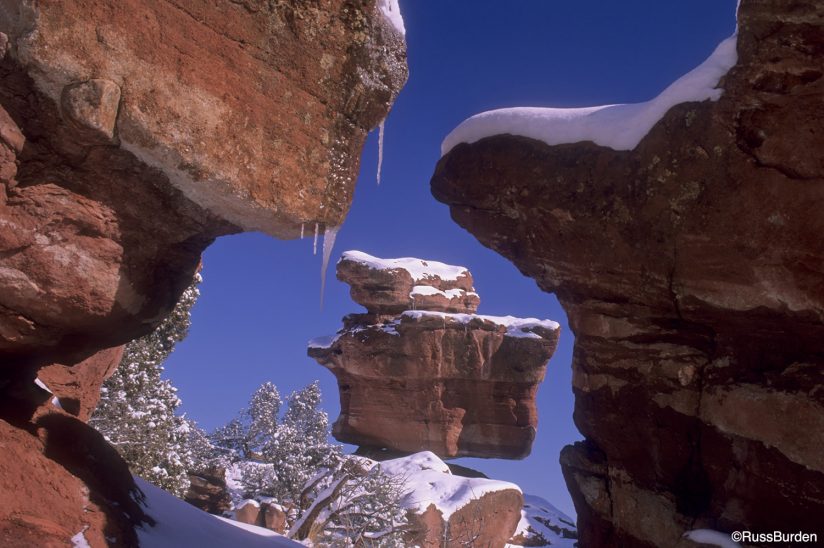
Images made when it’s snowing have similarities to those made in fog (see last week’s tip). The overall contrast range is lessened and a type of atmospheric perspective is created. Clutter is subdued as elements recede into the background. Fallen snow covers distractions. To protect my camera equipment from the elements, I use the same precautions as if I was photographing in the rain. Regarding my tripod, I make additional modifications. I wrap foam pipe insulation around the top part of the legs to keep my hands from freezing. This provides a warm area where the tripod is gripped. If I know I’ll encounter deep snow and I don’t want my tripod to sink, snowshoe feet can be strapped around the bottom of each leg, which increases the surface area. They resemble the basket part of a ski pole and provide a pad for each foot.
I love to exploit the beauty of fallen snow. The setting becomes a monochromatic wonderland in its expanse or a miniature world of white on white in macro. Subject wise, the possibilities are endless. The world takes on an entirely fresh look. Whether you look to the left, right, in front or behind you, there’s something new and different to shoot. Use slow shutter speeds to exaggerate the streaking lines of falling snow. To arrest descending flakes, use a fast shutter speed. Avoid using flash, as it illuminates the flakes directly in front of the lens, making them appear as undesirable, bright blobs.
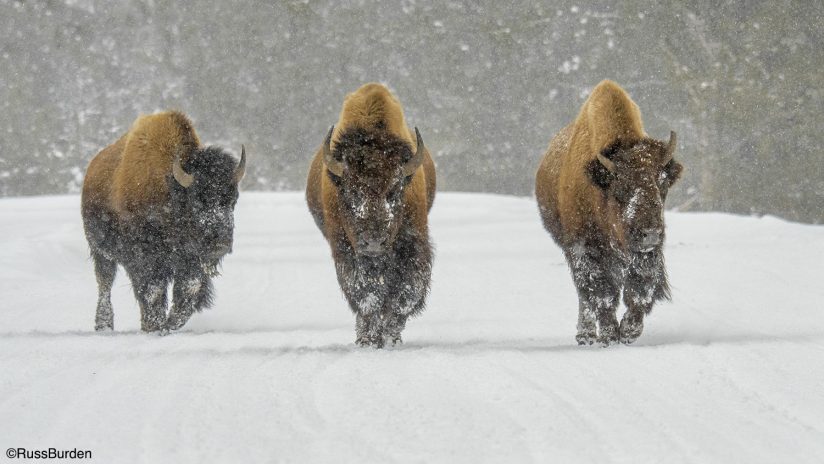
Bright sun and snow are a wonderful combination, but they present metering and overall exposure concerns. Snow reflects a magnitude of light, which gives false readings that result in gray snow instead of white. Dial in plus compensation to overcome this. How much depends on how much of the composition is snow, how much shadow area there is, how intense the sun is and whether the subject is back or front-lit. I strongly advise bracketing to obtain the correct exposure. Additionally, the bracketed series can be blended into an HDR image, which greatly expands the dynamic range of a single recording.
Cold
There are numerous advantages to shooting in the cold. During the winter, the sun stays at a lower angle, which provides better light. The low angle gives the subject dimensionality with more pleasing shadows than if the sun was directly overhead. Additionally, it skirts the horizon for a longer period of time, thereby lengthening the duration of sweet light. The sun rises later in the day, which translates to more sleep. It also sets earlier, which allows normal dinner schedules to be maintained. Lastly, the presence of bugs is eliminated so you don’t get eaten alive at sunrise or sunset.
Always carry spare batteries since cold weather drains their power more quickly. Another concern when shooting in cold weather is the buildup of condensation when cameras are brought indoors. Put the camera into a plastic bag to let moisture form on the plastic. Let it sit for a few hours before removing it. An alternative is to put all gear into a camera bag, which acts as an insulator, and let it gradually warm up to room temperature.
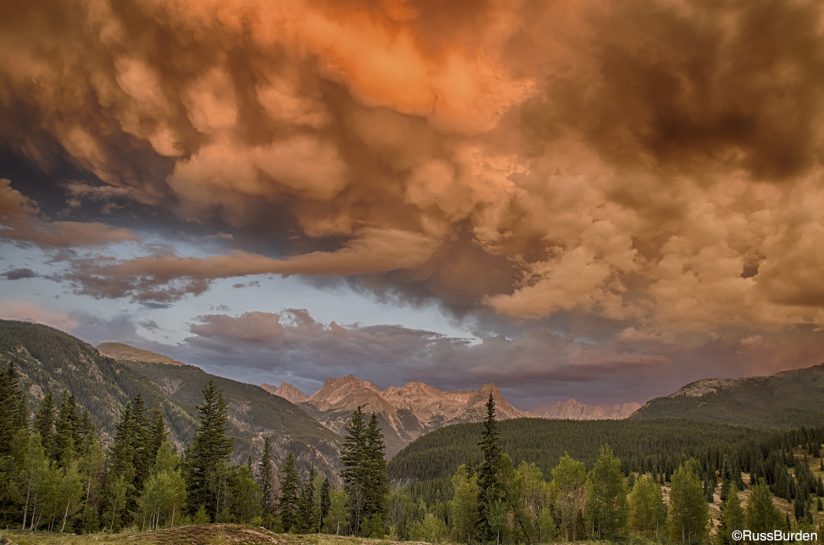
When I’m cold and miserable, I stand about as good a chance of coming back with creative images as kids in the Sahara have of building a snowman. I dress in layers of breathable, moisture-wicking fabrics starting with thermals. These fabrics lift away any perspiration from the skin, lessening the chance of getting a chill caused by dampness. Most heat loss is through the head, so a warm hat is a must. I also use battery-powered, heated glove liners for my hands. Blood can’t warm the toes and fingers as well as the trunk of the body, which makes these parts more susceptible. On top of the glove liners, I use gloves that have a convertible outer mitten layer. When I fold it back, it exposes just my shutter finger.
Clearing/Impending Storms
As a storm wanes or moves in, a crispness and dramatic feel fill the air. Listen to the weather to hear when a change in conditions is forecast. Be it an impending storm or the end of a snowfall, it’s at the cusp of these events that spectacular natural phenomena occur.
To watch a storm roll in is a multi-sensory experience. Visually, the sky begins to darken and clouds thicken. Bands of rain can be seen in the distance as they build in intensity, threatening the landscape with a downpour. The air takes on a distinct musty odor beckoning you to take cover. Sound-wise, a bizarre quietness brought on by the stillness in the air, envelopes the surroundings sometimes interrupted by a distant rumble of thunder. Gradually, the sky becomes more and more dramatic. Recording these events produces unique images since no two storms ever form in identical ways.
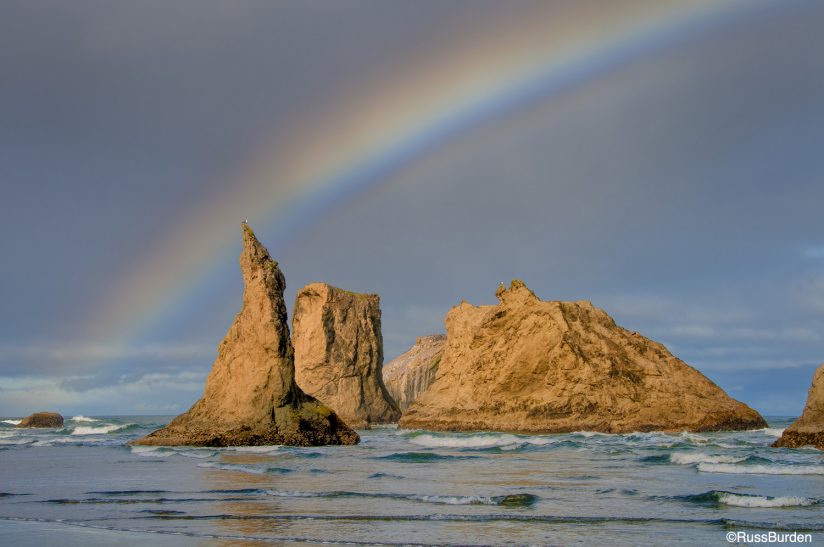
As a storm dissipates, a sense of freshness fills the air. Another yet different multi-sensory event unfolds. The precipitation scours the atmosphere, which removes pollutants. The repercussion is heightened visual acuity as everything is sharper to the eye. The smell is fresh and alive and the sounds of birds and other animals can be heard as they emerge from their hiding places. Witnessing this transition always inspires me to document the moment. When the sun is low on the horizon, an added bonus of an impending or waning storm is the possible formation of a rainbow. Rainbows appear when the sun is 42 degrees or lower from the horizon and there’s moisture suspended in the air directly opposite the sun.
Be it freezing temperatures, rain, snow or fog, the next time the sun gives you the “cold or wet” shoulder, challenge yourself to go out and create something new. Start in your backyard. Should you get cold or wet, shelter and hot cocoa are near. Gradually increase your distance from home. Before you know it, you may run into me in the absolute worst conditions. I look forward to seeing you out there.
Visit www.russburdenphotography.com for information about his nature photography tours and safari to Tanzania.
The post Weather Or Not: Get The Image, Part 2 appeared first on Outdoor Photographer.

